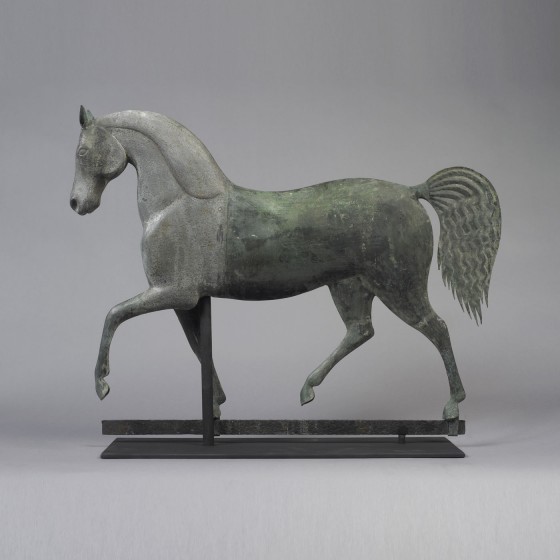Functional and artistic, weathervanes roosted over American buildings both humble and high style—barns and banks, churches and courthouses.
Viewed today as folk art, weathervanes were one of the earliest sculptural forms in the United States. Weathervane forms run the gamut through history beginning at the Temple of the Winds in ancient Athens, where the figure of Triton—cleverly designed to always face the direction of the wind—topped the structure. In America, colonial craftsmen fashioned unique weathervanes, such as Shem Drowne’s grasshopper atop Boston’s Faneuil Hall, which were later imitated, mass-produced and offered through mail-order catalogues. The exhibition, which included 28 weathervanes, covered the variety of forms popular in this country as well as the finer points of interest to collectors including finishes, manufacturers and matters of authenticity.
